1. Jell-O Salad

A colorful, gelatin-based dish that was often served at family gatherings, Jell-O salad became an iconic American dish, especially in the 1950s and 1960s. These salads were typically made with fruit, whipped cream, or cottage cheese and were often layered into molds to create a visually striking dessert. Jell-O salad was both a treat and a conversation starter.
Today, Jell-O salad has all but disappeared from American dinner tables. Its heavy reliance on processed, sugary ingredients and its sometimes odd combinations (like pineapple and cottage cheese) have led to its decline in favor of fresher, simpler desserts. The resurgence of healthier eating and the rejection of overly sweet, gelatin-based foods has made this retro favorite harder to find, except in very niche or nostalgia-driven settings.
2. Clam Bake
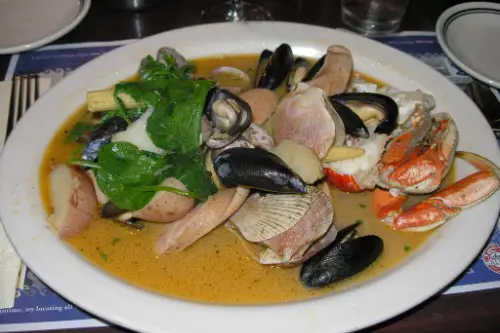
A traditional New England clam bake, usually held on the beach, involves digging a pit in the sand, layering seaweed, clams, lobsters, corn, and other goodies, and steaming them all together over hot stones. It was a fun and communal way to enjoy a meal during summer months and was popular for family reunions and local gatherings. The cooking process itself made the clam bake a social event, as much as a meal.
While the clam bake remains popular in New England, its tradition has become harder to find across the U.S. The labor-intensive nature of a true clam bake and the reliance on fresh, seasonal ingredients make it less feasible in areas where such seafood is not abundant or the outdoor cooking is impractical. While seafood boils are still a thing, they don’t quite capture the full clam bake experience. In many parts of the country, it has become a special, regional treat rather than a widely practiced tradition.
3. Ambrosia Salad

Ambrosia salad is one of those retro dishes that people either love or hate. It typically consists of canned fruit cocktail, shredded coconut, mini marshmallows, and sour cream or whipped cream. It’s sweet, creamy, and often served as a side dish at potlucks or holiday gatherings. Popular during the mid-20th century, it was a symbol of comfort and simplicity, especially in Southern American homes.
Despite its heyday in the 1950s and 1960s, Ambrosia has fallen out of favor for being overly sweet and heavy. The use of canned fruits and marshmallows makes it feel outdated in an era focused on fresh ingredients and lighter options. Some restaurants still offer it as a nostalgic dish, but for most, Ambrosia salad belongs to a time when processed foods were more readily embraced, and homemade desserts often took a backseat.
4. Turtle Soup
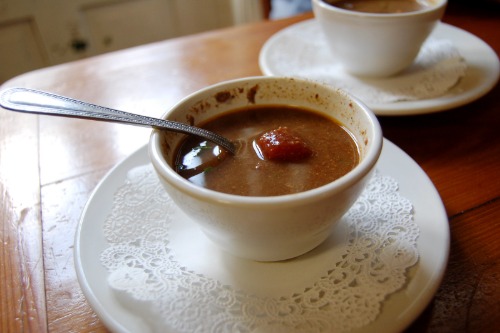
Once a delicacy reserved for special occasions, turtle soup was a favorite in Southern cuisine, especially in Louisiana, where it has deep ties to Creole and Cajun culinary traditions. Made from snapping turtle meat, the soup is a rich, hearty broth flavored with a variety of seasonings, vegetables, and often a splash of sherry or brandy. It was considered a luxury dish and frequently appeared on menus in the 19th and early 20th centuries.
These days, turtle soup has nearly vanished from mainstream American dining due to environmental concerns surrounding turtle populations and legal restrictions. Snapping turtles, once abundant, are now protected in many areas, making the dish harder to prepare and serve. As a result, turtle soup has become a rare find, typically only offered in specific regional spots or as a historical dish in specialty restaurants.
5. Beef Wellington
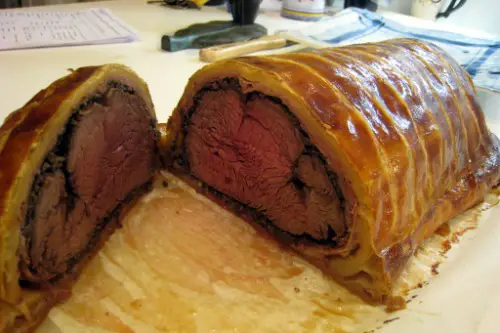
Beef Wellington is a rich, indulgent dish consisting of a beef tenderloin coated with pâté and duxelles (a finely chopped mushroom mixture), then wrapped in puff pastry and baked. Known for its elegant presentation, it became a hallmark of fine dining during the mid-20th century, especially in high-end restaurants and as a holiday centerpiece for families.
While Beef Wellington still appears on some upscale restaurant menus, it’s become much rarer outside of fine dining circles. The complexity and the time-consuming preparation of the dish have contributed to its decline. The contemporary trend towards more casual and quick meals has also made Beef Wellington less appealing. The dish remains an iconic part of American culinary history, but its intricate preparation means it’s not often found on dinner tables anymore.
6. Chopped Liver
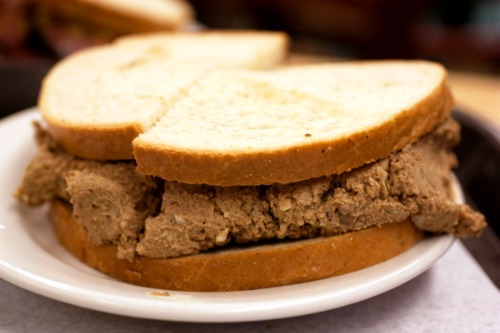
Chopped liver was once a popular appetizer, particularly in Jewish-American homes, and a fixture at holiday tables, especially around Passover and Rosh Hashanah. This savory spread, made from chicken or beef liver, onions, and eggs, was often served with crackers or rye bread. For many, it was the epitome of old-school American deli fare, rich in flavor and history.
While it has never truly disappeared, chopped liver has become increasingly hard to find in many parts of the U.S. Its strong flavor and the fact that it uses organ meats, which have fallen out of favor in modern cooking, have contributed to its decline. These days, you’ll still find it in Jewish delis or at nostalgic, old-fashioned restaurants, but it’s not as ubiquitous as it once was.
7. Frog Legs

Frog legs were once considered a gourmet delicacy, enjoyed particularly in French and Southern cuisine. Prepared in a variety of ways—fried, sautéed, or even in a creamy garlic sauce—frog legs were often served as appetizers or a special entrée in upscale American restaurants during the mid-1900s. The flavor of frog legs is often compared to chicken, though the texture is more delicate.
Today, frog legs are nearly impossible to find in mainstream American restaurants. The dish has become a niche item, with many people unfamiliar with it or hesitant to try it. Furthermore, as culinary tastes have shifted, more people are opting for familiar or sustainable options. You might still be able to find frog legs in a few specialized French or Creole restaurants, but they have largely faded from the general dining scene.
8. Meatloaf with Mashed Potatoes

Meatloaf with mashed potatoes was a quintessential comfort food combination in mid-20th-century America. A simple meatloaf, made of ground beef (and sometimes pork), breadcrumbs, and seasonings, served alongside creamy mashed potatoes, was a go-to meal for families. It was budget-friendly, filling, and could be easily stretched to feed a crowd. In fact, for many people, meatloaf was the ultimate in nostalgic, homey cooking.
Today, however, meatloaf has lost some of its status. The rise of meal prepping, health-conscious eating, and more adventurous cooking styles has led many to opt for lighter or more exotic alternatives. Though meatloaf may still have a spot in the hearts of those who grew up with it, it rarely makes an appearance at trendy restaurants or in many modern homes. Still, there are some diners and old-school eateries where this beloved dish is a comforting throwback.
9. Salisbury Steak
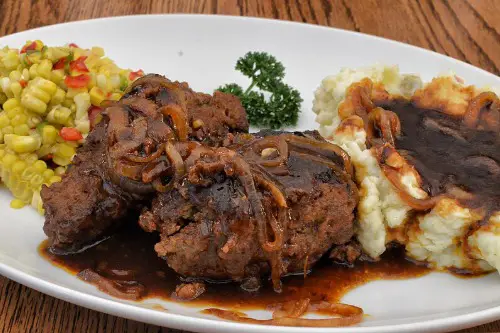
Salisbury steak, a dish made from ground beef seasoned and formed into a patty, was popular in the mid-20th century, especially as a quick and affordable dinner option. It’s usually served with a rich brown gravy and mashed potatoes or vegetables. Once a common feature of school lunches and TV dinners, Salisbury steak was a go-to meal for families looking for an easy, filling dish.
Over the years, Salisbury steak has lost its place in modern American kitchens, as tastes have shifted toward fresher, more flavorful dishes. The dish’s association with processed food—especially the frozen varieties—has made it less appealing to those seeking healthier, less processed options. Today, you might still find it in some retro diners or nostalgic restaurants, but it’s much harder to come by in most households.
10. Casserole

Casseroles were the heart of many American dinners from the 1950s to the 1970s, thanks to their convenience and ability to stretch a small amount of ingredients into a hearty meal. Whether it was tuna noodle casserole, green bean casserole, or the classic macaroni and cheese, casseroles were beloved for their one-dish simplicity and the fact that they could easily be made ahead of time.
In the present day, casseroles have fallen out of favor, as people tend to lean toward fresher, lighter meals. The abundance of processed ingredients like canned soups and pre-packaged sauces, which were key in casseroles’ popularity, has made them less appealing to those who focus on whole foods and homemade cooking. While casserole recipes still make appearances in some family kitchens, they are far from the regular part of the modern American diet that they once were.
11. Kidney Pie
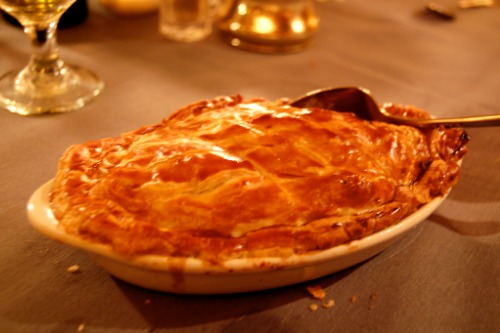
Kidney pie was a beloved English-inspired dish in American cuisine, especially in the 19th and early 20th centuries. It typically consisted of lamb kidneys, onions, and gravy wrapped in a flaky pastry crust. It was hearty, rich, and a good way to use affordable organ meats. Kidney pie was a popular comfort food during times when people were more inclined to use every part of the animal.
In recent years, kidney pie has faded from mainstream American menus as organ meats have fallen out of favor. It’s hard to find in most modern American households, as people have moved away from the strong, acquired taste of organs. While you might still find kidney pie at certain British or Irish-themed pubs or restaurants, it’s become one of those dishes that remains very much a part of culinary history rather than current trends.
12. Chicken à la King

Once a staple in American households, Chicken à la King was a creamy, rich dish consisting of diced chicken, mushrooms, and peppers, served over rice, pasta, or toast. It first appeared in the late 19th century, and by the mid-20th century, it was often found on menus of upscale restaurants and hotels. The dish’s creamy sauce, often made with heavy cream or a béchamel base, paired perfectly with tender chicken, offering a luxurious, comforting bite.
However, over the years, the dish’s popularity has waned, and it is increasingly hard to find in today’s dining scene. The rise of lighter, healthier options and a shift toward more modern culinary tastes left Chicken à la King behind. Though you can occasionally find it at vintage-themed diners or specialized restaurants, it’s largely considered a forgotten classic. Nostalgic foodies still remember it fondly, but its rich, indulgent nature simply doesn’t fit with today’s dining preferences as much.
13. Shrimp Cocktail
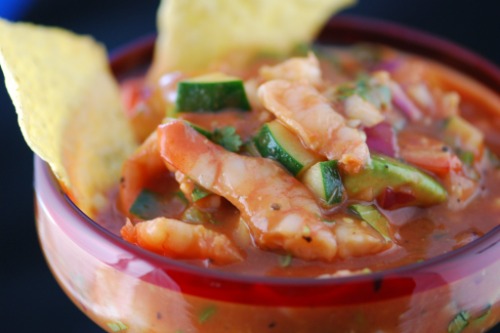
Shrimp cocktail was a staple of elegant dinners and high-society gatherings for decades, particularly during the mid-20th century. The dish features cold, boiled shrimp served with a tangy, often spicy cocktail sauce. It was a quintessential appetizer in fancy restaurants and often appeared as the starter at banquets, holiday parties, and celebratory occasions. In many ways, it symbolized a glamorous era of dining.
However, shrimp cocktail fell out of favor as American tastes evolved, with diners seeking more exciting, contemporary seafood preparations. The dish’s simplicity, once considered elegant, now feels a bit dated compared to the vibrant seafood options that are currently popular, like sushi and ceviche. You can still find it at retro-themed or classic steakhouses, but outside of that, shrimp cocktail has become a rarity on most restaurant menus.
14. Stuffed Quail

Stuffed quail was once a luxurious entrée, often associated with fine dining and special occasions. The quail, a small bird, was stuffed with a mixture of herbs, rice, and sometimes foie gras or other rich ingredients, then roasted to perfection. The dish was particularly popular in the Southern U.S. and was considered a delicacy for upscale gatherings or holiday feasts.
However, with the rise of poultry farming, quail—once abundant in the wild—has become less common in most American kitchens. The shift to more accessible meats, such as chicken and turkey, has relegated quail to the niche status it holds today. You might still find stuffed quail on the menu at high-end restaurants that specialize in game meat, but for the most part, this luxurious dish has slipped out of the spotlight in favor of more mainstream options.


